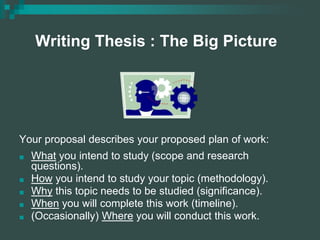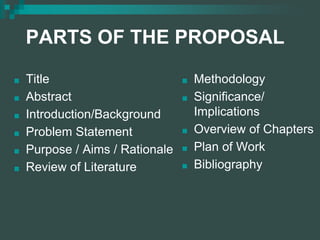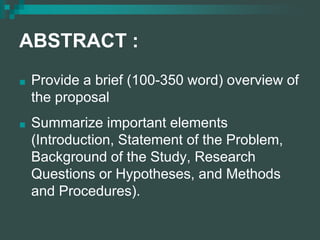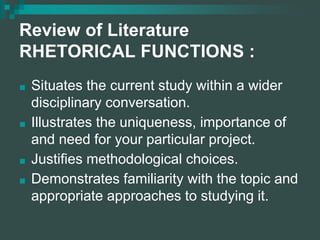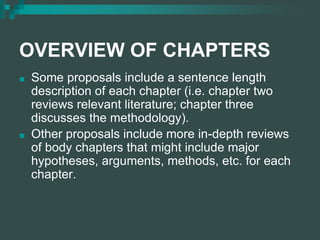This document provides guidance on writing a thesis proposal. It explains that a proposal describes the scope, methodology, significance and timeline of a research project. The purpose is to justify and plan the research and show how it contributes to existing research. Key parts of a proposal include the title, abstract, introduction, problem statement, purpose, literature review, methodology, significance, overview of chapters, timeline and bibliography. The document provides tips for each section and emphasizes establishing a clear problem or research question, justifying the methodology, and demonstrating the significance of the proposed work. It also discusses style considerations like maintaining a confident tone and coherence.

